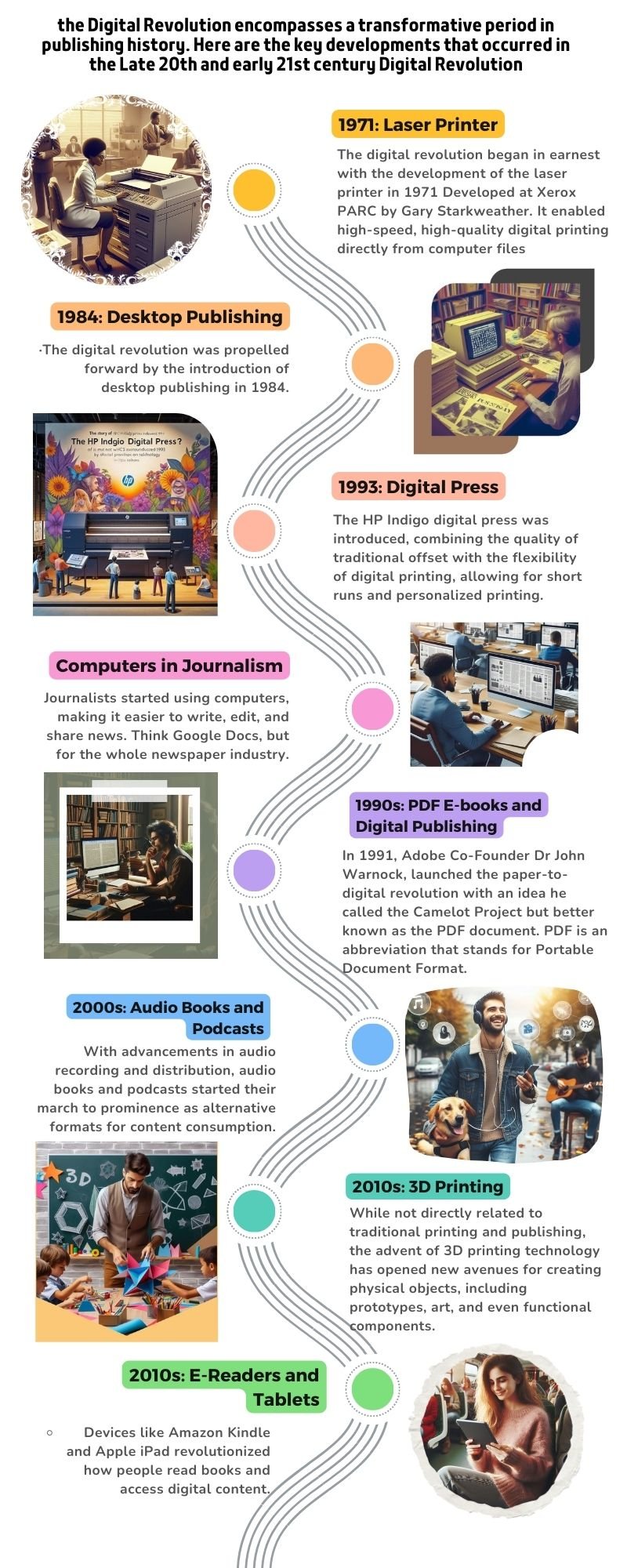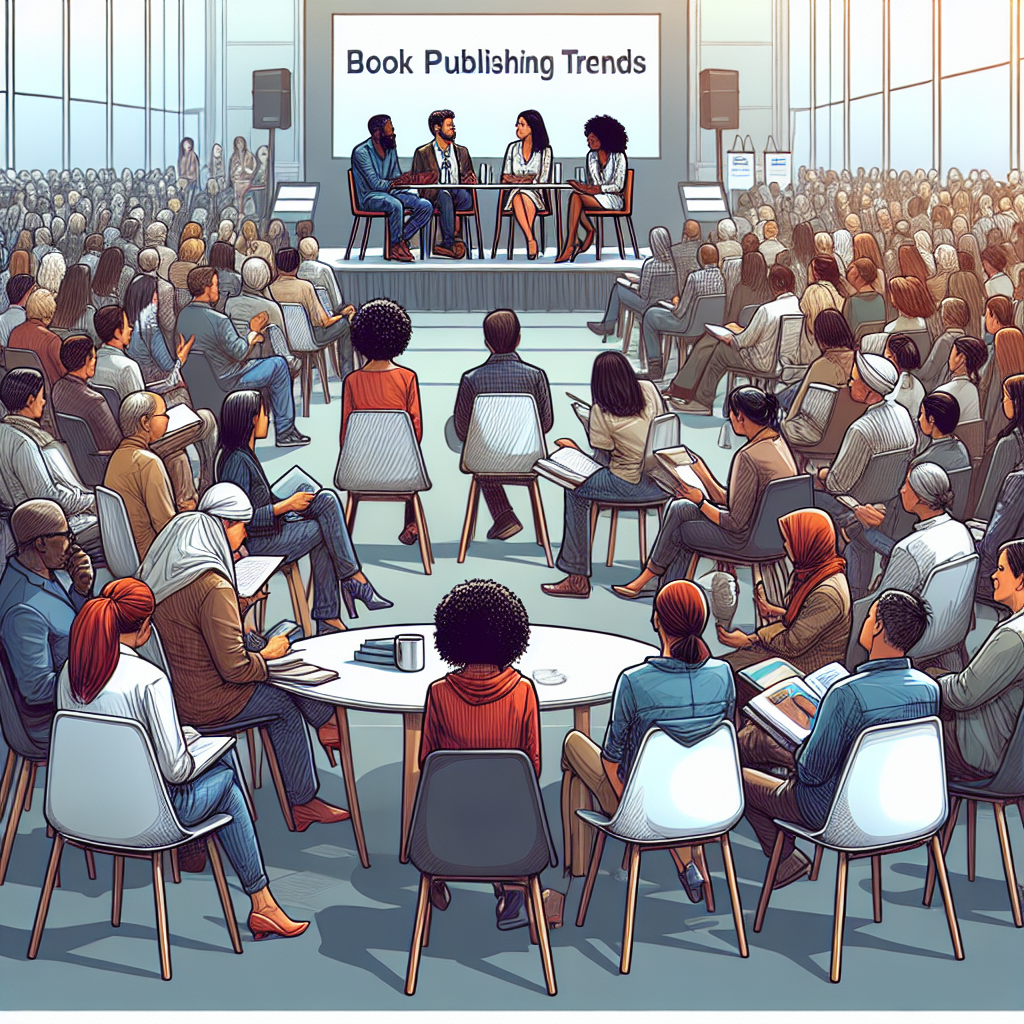
The Digital Revolution in Publishing - Opportunities and Challenges for Modern Authors
Chapter 3: From Print to Pixels: The Evolution of Publishing in the Digital Age
Including an introduction to The Divya Publishing Advantage
A 3 Part Series
PART 3 of 3
In this, the third article of our series on publishing, we will witness for the second time in this series, a transformative shift in the publishing industry. The first was the invention of the movable type printing press by Gutenberg, which replaced the painstakingly slow process of manually copying each page.
Shaping the Future of Publishing
The second, which we are living through now, is digital media, which marks a significant departure from traditional publishing models. This evolution has not only altered the landscape of publishing but has also opened myriad opportunities for authors, enabling greater creative freedom, accessibility, and reach.
From Ship to Screen: How Digital is Redefining Distribution in Publishing
The digital era has significantly reshaped the landscape of the publishing industry in ways I could never have dreamt of when I was a boy, and I assume it is the same for most adults in 2024. As a thought exercise, compare the first method for the mass distribution of books, supplying captains of sailing ships with five copies of books to sell at the next port they visit, as happened 500 years ago, or the faster, but still slow, transportation methods of the last 300 years up to the late 20th century, to the rapid, near instantaneous dissemination of e-books, digital magazines and news via the Internet today. That’s the effect of the digital revolution of the last 25 years.
Add to that other recent innovations, such as the use of artificial intelligence (AI) and the development of blockchain technology for content management and distribution. And there’s the promise of more to come, as you will see below.
The End of Gatekeeping: How Authors Are Bypassing Traditional Publishing
Traditionally, getting a book published involved an arduous process of manuscript submissions, rejections, and daunting negotiations with publishers. Digital media has democratised the publishing process, giving authors the opportunity to bypass these traditional gatekeepers. Self-publishing platforms like Amazon’s Kindle Direct Publishing, Lulu and Smashwords, among others, provide platforms that empower authors to publish their work directly to worldwide audiences with no intermediary. This freedom has created a power shift from publishers to authors, enabling a diverse range of voices and stories to emerge, many of which the major publishing houses would probably never have picked up.
The Digital Leap: Innovations that Transformed Publishing
The development of the laser printer in 1971 marked the beginning of the digital revolution in earnest, and the introduction of desktop publishing in 1984 significantly boosted its progress. The availability of tools like Adobe PageMaker and the Apple Macintosh, as well as Microsoft’s Publisher and the personal computer, allowed individuals to design and publish content from the comfort of their homes, democratising the publishing process.
I remember using Publisher to create a family newsletter with photos that I posted to family and friends overseas. I can tell you that significantly reduced the number of letters I had to write, and, of course, saved me a lot of time. Employing the identical procedure, I created newsletters for my clients, which were initially printed and mailed but eventually sent via email as a pdf.
The rise and rise of digital media continued into the 21st century with the growing interest in e-books and digital publishing platforms, facilitated by devices like the Amazon Kindle and the Apple iPhone which signalled the inescapable spread of digital technology into every aspect of our lives.
Harnessing Digital Power: A Journey from Adobe to AI
The explosion of digital content in the 2010s gained momentum because of platforms like online news outlets, social media, and print-on-demand services that only print a book when purchased. These innovations not only reduced costs and barriers to entry for authors, but also introduced innovative ways to interact with readers.
Two fairly recent innovations that tech savvy content creators are using more often are augmented reality (AR) and virtual reality (VR) technologies, which have revolutionised interactive storytelling experiences, mainly for younger, tech-savvy audiences.
It’s impossible not to notice the arrival of AI. It’s been in the news every day, often with warnings about its possible negative effects. However, integrating AI into publishing has streamlined content creation, editing and layout design for authors and publishers, but it also benefits readers, with personalised reader recommendations for other books they might like now a common feature.
However, this has introduced another wrinkle into the marketing of books, as it is better to have your own books recommended under your new book on Amazon, for example, rather than those of other writers. At Divya publishing we have found a way to do this even if the author only has one book currently but plans to write more.
Will Digital Publishing lead to a Power Shift from Publishers to Authors?
Yes, digital media has significantly transformed the publishing industry, providing authors with unprecedented opportunities to independently self-publish. If authors can overcome the other challenges they have, such as marketing, digital media could contribute to a power shift from traditional publishers to authors or perhaps, to new era publishers, such as Divya Publishing.
With much higher royalties got from self-published digital sales compared to the low royalties paid by traditional publishing houses, the potential financial benefit seems obvious. For authors that want to self-publish, companies such as Amazon’s Kindle Direct Publishing, Smashwords, and Lulu make self-publishing effortless, allowing authors to give voice to diverse stories that may not fit traditional publishing norms. This shift not only fosters creative freedom but also enhances accessibility to a global audience.
Finally, the digital route is cheaper because authors don’t have to worry about printing, shipping, or storing physical books, making it a more financially sustainable choice to get their books to market. When my friend, Graeme, wrote a book on dating in the 1990s, to get a reasonable price on printing, he ordered a fairly large quantity. I remember it well because I stored them in my garage for a few years until they were all sold.
Beyond the Hype: The Double-Edged Sword of Self-Publishing
The rise of digital media offers so many opportunities for authors it should be good news. However, while the digital revolution presents a landscape ripe with potential, it also brings its own set of challenges that overshadow the benefits for many authors.
This is particularly true for self-published writers who struggle to leverage these amazing advances because of financial constraints and the complexities of marketing in the digital age.
The Great Myth About Self-Publishing
Despite the many advantages in terms of lower costs and higher royalties, most authors face a completely different and harsh reality. Statistically, self-published authors sell fewer than 100 copies of each of their books each year, and even those reaching slightly broader audiences typically sell fewer than 250 copies annually. High royalties, often touted as a major benefit of self-publishing, cannot compensate for the low sales volume, leaving many authors financially strained.
The Hidden Costs of Digital Freedom in Publishing
Another misconception about Self-publishing in the digital era is that it is almost free or very cheap. But that is a great lie unless it is a vanity project, not intended for sale, for example, a family history or a company history written as a branding exercise to be sent to corporate clients. In which case, self-publishing can save you a lot of money.
However, Self-publishing a best seller requires a significant investment of time and money to do all the tasks necessary to create a book that sells well. Authors must juggle multiple roles and multiple tasks, including writing their books, creating and maintaining a website, opening social media accounts like TikTok, Instagram, Facebook pages, groups and reels and others, plus posting regularly to them.
Unlocking Bestseller Status: The Critical Importance of Marketing in Publishing
In order to achieve bestseller status, authors must plan and implement an excellent marketing strategy from launch to sales.
A critical component of any marketing plan is building a large email list. Before launching the book, authors should begin the first step of attracting readers to join their email list. The next step is writing interesting, funny, informative and relationship building quality emails to send to their email list regularly.
Basically, the marketing strategies authors implement ultimately determine their book’s success and their income. Marketing determines whether they thrive as an author or only sell a few books annually.
Obviously, the need for a robust online presence such as a regularly updated website and the ability to navigate digital marketing strategies, social media engagement, email marketing, and SEO (search engine optimisation) are critical for success. But these are time-consuming endeavours that many authors cannot manage alongside their writing and their need to hold down a full-time job.
This is where partnering with a new-era publisher like Divya Publishing can make a significant difference.
Divya Publishing stands out as a leader in the new era Co-Publishing method providing an all-encompassing support package including collaboration with authors from planning your book to launching it and beyond.
We have a one-of-a-kind approach for providing authors with a substantial advance, which significantly contributes to the success of their book. We achieve this by allocating funds to essential tasks such as web design, book layout and cover design, editing, marketing, and boosting book sales with complementary derivative products.
We specialise in helping authors create the right derivative products to complement their creative work. We incorporate video and develop interactive digital narratives that enrich the reading experience. These enhancements not only make books more engaging but also increase their marketability.
Divya Publishing can insert QR codes in physical books, leading readers to interactive online content, thus blending the traditional with the digital seamlessly. This level of support is crucial for authors who need to focus on their writing while leaving marketing and technological enhancements to experienced professionals.
Summary
Divya Publishing: Where Authors Thrive with Enhanced Marketing and Sales Support
Given the challenges authors face, there is a growing need for an innovative publishing model that can support authors, and we have designed the system to do just that.
Divya Publishing stands out as a new era publisher that offers Co-Publishing opportunities to authors. We not only support you through the writing process, market and sell your books, but also create derivative products and enhance digital books with video and interactive digital narratives.
By Co-Publishing with a company like Divya Publishing, authors can focus more on their writing while leveraging professional support for the technical and marketing aspects of book publishing.
While the digital revolution in publishing heralds a new era of opportunities for authors, the reality of marketing and sales can be daunting.
Collaboration with a publisher like Divya Publishing, which offers an all-encompassing support package, enables authors to leverage the benefits of digital media while addressing the practical challenges of book marketing and sales.
Most importantly, it gives them the potential to earn more from their writing and have time to write more books because they are not doing a myriad of other non-writing, but necessary, tasks.
This Co-Publishing model not only eases the burden on authors but also maximises their potential for success in the competitive world of book publishing.
Publish with Divya and Reap the Rewards
Related Articles











